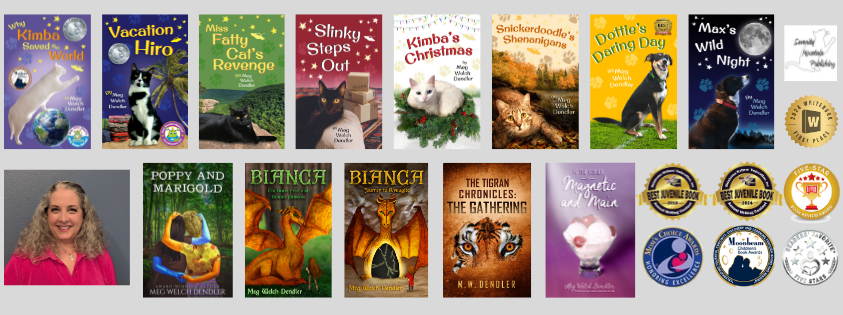What inspired you to write this book?
I have been writing for years, but this particular story was inspired by the real life Kimba. She is such a kook and is constantly into something. I love her beyond reason in that way that only crazy cat ladies can truly understand. As a child, I had heard a story about cats being aliens and communicating through mirrors with cats on earth, so it didn’t take much for me to start imagining Kimba being a part of that. She and her sister, Hiro, spent the first few months of their lives living in our bathroom, so I just let my thoughts about what they might be up to in there when we were gone run wild.
What topics in your book or background do you think book clubs would find interesting?
“Why Kimba Saved The World” is a children’s book, but I have had many adults read it and be just as interested in Kimba and the choices she has to make. We all have things we want to be free from, to feel independent, but that freedom comes with challenges of its own. It’s not always all we thought it would be. What if that freedom meant hurting someone else? Kimba’s decisions echo the same ones we all face in our lives.
Tell us about your career outside of writing and how it influences your writing.
I spent many years working with and later teaching young children — preschool, kindergarten, and early elementary. I have been certified to teach in two states and hold a Master’s Degree in Early Childhood Education. Language Arts and Reading were always my specialties and favorite parts of the curriculum. I always spent way too much money on books when I went to teaching conferences and loved reading them aloud in class and at home to my own daughters. Any time I am working on a book, I try to think about how it would be received by a child just listening to it — not yet able to read it him or herself. For a book like “Why Kimba Saved The World,” it is important to walk that line between the child being able to read it independently and an even younger child listening to it aloud and being absorbed by the characters.
Describe your style of writing?
I consistently lean toward third person omnipotent, the outside source who knows what everyone is thinking and sees all as the narrator. It isn’t that I went through different ways of presenting the text and ended up with that one, it is just what is comfortable for me as a writer. Both the sequel “Vacation Hiro” and an unrelated book “At The Corner of Magnetic and Main,” which I am working on now, have that same style. I also test my text against that read aloud-ability scale that I mentioned earlier. I read paragraphs out loud and edit them when it doesn’t flow well or I find myself naturally using a different word or phrasing than what I originally wrote. I helps me catch mistakes in the text too.
Which authors have inspired you?
I am very blessed to have a mother who loves books. When I was in elementary school, bedtime stories included T.H. White’s “The Once And Future King,” “Watership Down,” and Anne McCaffrey’s Dragonriders series. She continued to read aloud to me long past when I was an independent reader, and that is so important. It allowed me to “read” books that were still a bit beyond me but had amazing vocabulary and stories. We also had all of the Wizard of Oz books (by Baum and his daughter), the Laura Ingalls Wilder series, Beverly Cleary, Roald Dahl, Judy Blume, and Madeline L’Engle. After reading “A Wrinkle in Time,” I insisted that everyone begin calling me Meg (my nickname at the time was Molly), and it stuck. It’s probably not surprising to hear that “Socks” was one of my very favorite books growing up. I read it dozens of times. As a teacher, I grew to love newer authors like Don and Audrey Wood, Lois Lowry, and Jean Craighead George. When I tried to read aloud “Charlotte’s Web” to a group of first graders a couple of years ago, I couldn’t make it through the part where Charlotte dies without crying. To say out loud that she was all alone at the end was so heartbreaking. Now that’s great writing!

